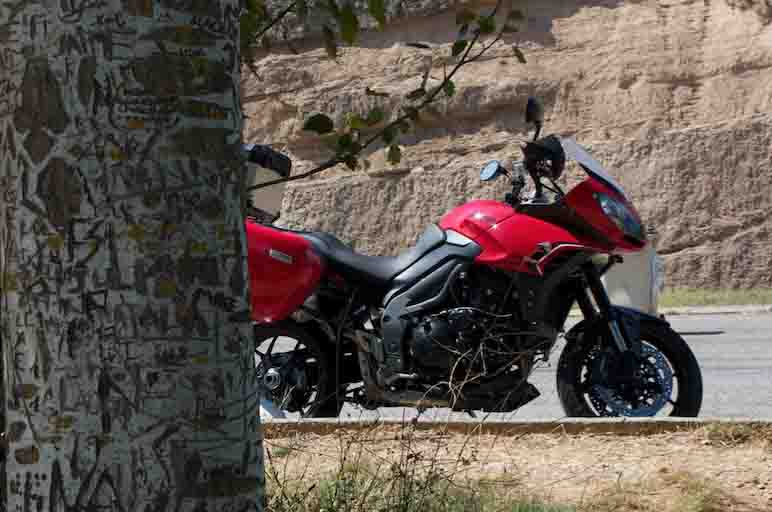How to emergency brake on a motorcycle
It’s much harder to quickly stop a motorcycle than to make a motorcycle go quickly! It takes skill, a bit of knowhow and a lot of practice in a safe place to get it right.
How hard should I brake on my motorcycle?
The optimum braking point is just before your front wheel locks up and begins to skid. This is what you’ll see the pro’s doing on the MotoGP week in and week out, but they have near-perfect conditions and no cars to worry about, so let’s forget about them.
It’s important to think about how your bike achieves optimum grip on the road under braking – imagine pushing a toy car along the floor. Then imagine pushing all of your weight on top of the car and trying to push again – it becomes much more difficult to move. In principle, that’s what’s happening when you begin to brake on your motorcycle – the weight is shifting to the front wheel and tyre, therefore increasing grip.
The size of the surface area of the tyre touching the road also increases with pressure, adding to the available grip.
Progressive braking
Don’t just snatch at the front brake and grab as hard as you can – you want to keep the back wheel behind you!
We recommend applying slight pressure to the back brake, quickly followed by a progressive squeeze on the front brake. As you feel the weight of the bike move forward, increase the intensity of your squeeze as the bike slows, until you come to a stop.
Pulling in the clutch is important – ideally you would do this early in your stop process.
Return to first gear when you can. This helps ensure that you can move again quickly if you need to. Did that car behind you manage to slow down as quickly as you did? Check your mirrors and be ready to act.
Remember – A lot depends on you and your bike!
There are of course many other factors that contribute to your own individual ‘optimum’ stopping distance, such as:
- Rider weight
- Rider reaction time (time and distance covered between hazard occurring and application of brakes)
- Bike shape and size
- Luggage
- Road surface condition and temperature
- Tyre compound and wear
- Brake technology & condition
- ABS / Non-ABS
Over recent years, ABS bikes have begun to out perform even the professionals on Non-ABS bikes. The toss up between the two was often a source of debate and controversy, however it is now widely accepted that on the road, ABS is the safer option.
Should I turn and emergency brake at the same time?
Broadly speaking, no. If the your situation has changed and you need to make an evasive maneuver, ease off the brakes, make your move, and pull them back on again.
Also, make sure your brake lever isn’t too far away from your accelerator. If you’re stretching out, adjust them to bring them closer, reducing your reaction time. It’s best practice and could make all the difference.
Practice, again and then a bit later too!
If you passed your test some years ago, when can you honestly say you last went out of your way to practice an emergency stop?
It’s especially important to practice emergency stops when riding a different or a new bike – each will be set up slightly differently, from lever positions to brake pad condition. Make sure you’re familiar.
A great way to practice is to go to a quiet location (an empty car park for example) and, after a few warm up emergency stops, mark an brake line and attempt to safely reduce the distance it takes you to brake.
This will help you learn to naturally and re-actively brake more efficiently, but also informs you of the amount of space you will typically need to stop at different speeds.
It’s important to practice this on those wet days, too.
Maintaining the brakes and tyres
An essential part of your pre-ride checks should be and inspection of your brakes and tyres. Make sure there is enough tread left by referring to the minimum requirement for your country, and inspect your brake pads and lines before setting off. Any fluid leaking from the reservoir (or anywhere on the bike in fact!) should be an immediate concern to address before riding.
Remember, there’s no blog in the world out there that can assess your own personal needs. If necessary, seek professional tuition and advice. There’s no shame in it, and you’ll be surprised how many other bad habits you’ve picked up along the way!


